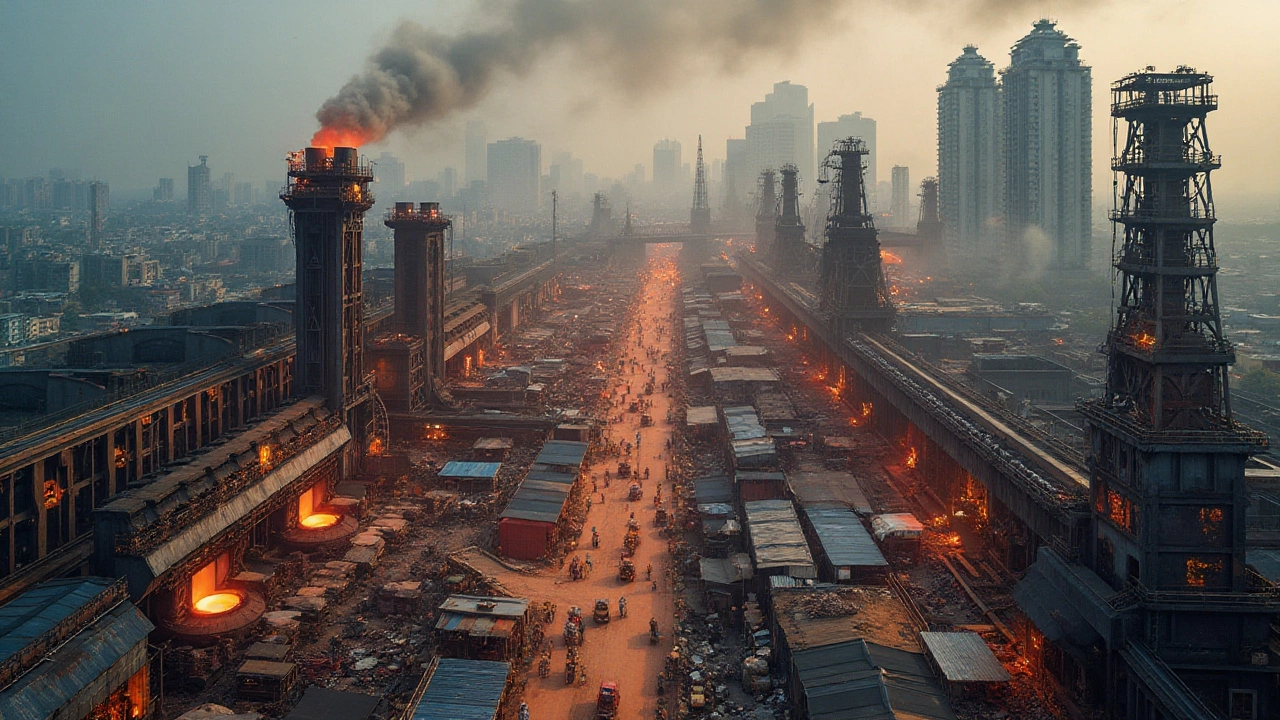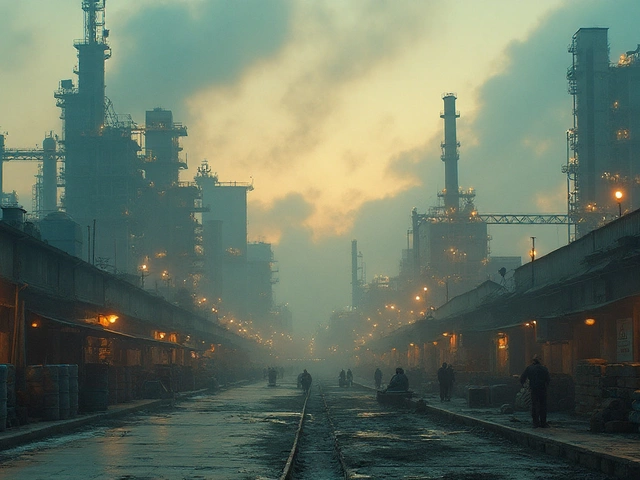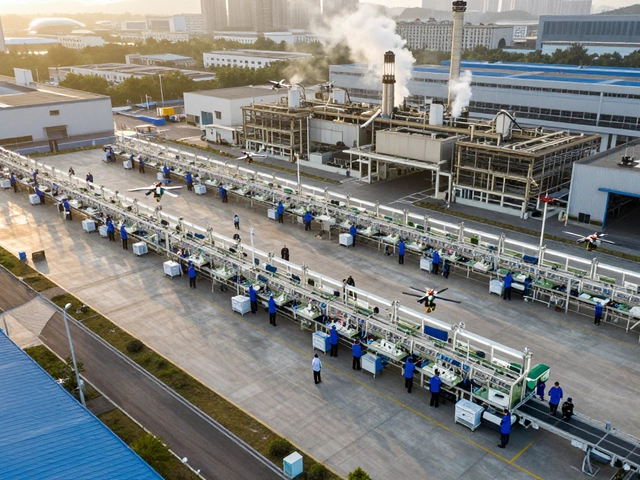Steel plays an indispensable role in shaping the infrastructure and economic landscapes of contemporary societies. With a presence in everything from skyscrapers to utensils, its consumption is a telling measure of a country’s industrial prowess and economic strides. In the fast-paced arena of global steel consumption, nations vie for prominence, with one country emerging as the top consumer.
This exploration takes us through the reasons behind burgeoning steel demands, the main players in this arena, and the implications for economies and manufacturers. As we unravel the layers of this industry, we spotlight the intricate dance between consumption rates and industrial growth, offering insights and foresight into sustainable practices and future projections in the world of steel.
- The Global Steel Industry Overview
- Top Consumer: Country Insights
- Factors Driving Steel Consumption
- Impact of Steel Consumption on Economy
- Sustainable Practices in Steel Manufacturing
- Future Trends in Steel Usage
The Global Steel Industry Overview
The steel industry has long stood as a cornerstone of economic development, with its roots tracing back to the Industrial Revolution. Today, it remains pivotal, impacting sectors from construction to automotive and beyond. The meteoric rise in urbanization and industrial growth fueling this synergy is evident, particularly in rapidly expanding economies. Steel's versatility, strength, and recyclability make it indispensable, driving demand across the globe. Interestingly, the global steel market experienced remarkable growth over the past decade with producers seeking new ways to innovate and meet the ever-evolving demands of worldwide consumption.
As of recent estimates, more than 1.8 billion metric tonnes of steel are produced annually. Such significant output requires careful analysis to optimize resources while minimizing environmental impact. The top five steel-producing countries—China, India, Japan, the United States, and Russia—contribute the lion's share of this production. Among them, China takes the lead, producing more than half of the world’s steel. This dominance results not only from the mammoth infrastructure projects underway but also due to strategic trade policies facilitating exports. Steel manufacturing is thus a strategic player in global trade, influencing economic policies and international relations.
Technological advancements play a crucial role in reshaping the steel manufacturing landscape. Innovations in production processes, such as electric arc furnaces and advanced material engineering, aim to improve efficiency and reduce carbon footprints.
As emphasized by the World Steel Association, "The future of steel is in embracing sustainability and digitalization, combining technologies that enhance performance with eco-friendly practices."This quote underlines how the synergy between technology and sustainability efforts shapes modern steel production and consumption.
Examining global consumption trends, developing nations account for a substantial portion given their rapid industrialization phase. The infrastructure boom in Asia, Africa, and Latin America substantially dictates the lion's share of steel consumption. A notable indicator is China's Belt and Road Initiative, which has significantly boosted steel demand across the participating countries. However, challenges persist in balancing between boosting production and maintaining sustainability. Initiatives focusing on recycling and green steel are gaining traction, promising a forward-looking approach to align industry sustainability with economic goals.
Top Consumer: Country Insights
Amid the bustling global steel industry, China stands as a towering giant. It not only leads the world in steel production but also in consumption. Consuming over half of the world's steel, China's demand stems from its massive infrastructure projects, burgeoning urban centers, and a roaring manufacturing sector. The country's capacity to consume such vast quantities of steel is driven by its aspirations to balance rural and urban development, an ambition reflected in the dense weave of roads, railways, and high-rise buildings that characterize its ever-evolving skylines. The country's strategies go beyond mere consumption; they signify an intricate symbiosis of domestic needs and economic growth objectives.
In recent years, China's Belt and Road Initiative has been a significant consumer of steel, reinforcing the nation’s position. This ambitious project, which seeks to create vast trade and infrastructure networks between Asia and Europe, has required a colossal amount of resources, particularly steel. This perpetual appetite has forged a strong domestic steel industry, one that innovates continuously to meet both quantity and quality demands. Notably, the onset of the digital economy and its inevitable linkage with smart city endeavors further amplifies the steel consumption statistics in China.
According to a report by the World Steel Association, "China's unparalleled steel demand is closely tied to its infrastructure and manufacturing boom, making it a pivotal player in shaping the global steel landscape."
Despite China's large consumption, it's vital to consider the environmental ramifications accompanying such massive steel production. The country's government has recognized this issue and seeks sustainable paths to manage resources more efficiently. Nationwide policies encouraging recycling and energy-saving technologies manifest this commitment to sustainability. Yet, these reforms need a delicate balance with the production demands to avoid cramping the country's development agenda.
Additionally, the global context cannot be ignored. Other major steel consumers like India and the United States watch China's movements closely, often adapting their strategies in response. India, poised as the second-largest consumer, is ramping up its infrastructure and housing initiatives to absorb a larger chunk of global steel demand. The US, with its considerable industrial and infrastructural renewal projects, remains a crucial player, though on a different scale compared to China.
Such interplays between these nations highlight the broader competitive landscape within the steel sector. While China's dominance is evident, its strategies and policies directly or indirectly influence worldwide markets. The global steel dynamics are, thus, a narrative of intricate connections, cooperation, competition, and modern challenges that shape today's economic landscapes.
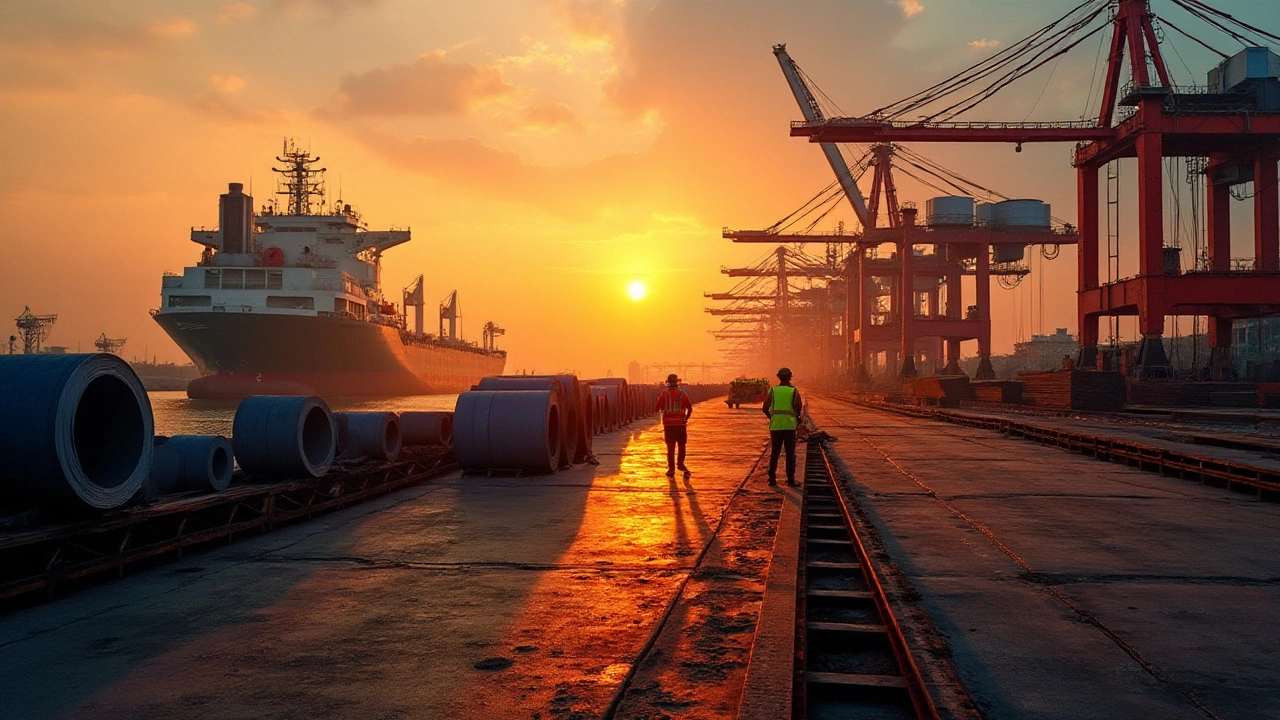
Factors Driving Steel Consumption
The consumption of steel across the globe is influenced by a multitude of factors that intertwine to reflect the complexities of modern economies. Key among these is the growth of infrastructure projects, as burgeoning urbanization urges nations to expand their cities upward and outward. The craving for taller buildings, extensive transportation networks, and expansive industrial sectors hinges significantly on steel. This metal, known for its durability and strength, forms the backbone of skyscrapers, bridges, and railways. A burgeoning infrastructure sector can exponentially drive demand, creating a ripple effect through related industries like construction and engineering, which rely heavily on the steadfast supply of this critical material.
Another pivotal driver is the booming automotive industry, which demands high-quality steel for the production of vehicles. With an ever-increasing number of cars hitting the roads around the world, especially in developing regions where economic prosperity is on the rise, the appetite for steel is witnessing unprecedented heights. This demand extends beyond cars to include buses, trucks, trains, and even ships, all of which are imperative in maintaining the global logistical framework. As these industries continue to innovate towards lighter, more efficient designs, they often turn to advanced high-strength steels, pushing the boundaries of what the material can achieve and simultaneously pushing the demands further.
The allure of steel is equally evident in its use within the wide-reaching branches of manufacturing and consumer goods. From household appliances to industrial machinery, steel’s versatility and cost-effectiveness make it a top choice for manufacturers. Economic growth in nations typically spikes the production of such goods, directly correlating with an uptick in steel consumption. The global reach of this demand sees the distribution of steel-intensive products across continents, seamlessly weaving the production processes of different regions into a fabric that caters to global needs.
Steel consumption is also directly impacted by technological advancements. As industries evolve, integrating cutting-edge technologies into production, they often redefine how steel is used, pushing the traditional boundaries. The development of ultra-light and ultra-flexible steel variations exemplifies this progression, with new applications and efficiencies being discovered almost daily. Such developments do not merely alter the quantities used but also the types of steel that see demand fluctuating based on industry requirements. This constant innovation cycle keeps the demand dynamic and, often, unpredictable.
Economies that invest heavily in renewable energy sources like wind and solar power also contribute to steel consumption. The construction of wind turbines, solar panels, and the like requires substantial steel inputs. As nations transition toward greener energies, the steel industry adapts to meet these needs, demonstrating that demand is as much about changing consumption patterns as it is about economic proliferation. This shift to sustainable solutions drives a different sort of demand trajectory, one that, while still substantial, may focus on specialized steel products that align with environmental goals.
"Steel is the backbone of the world we live in—supporting the structures of our cities, the engines of our cars, and the pipes of our modern conveniences." - World Steel Association
Impact of Steel Consumption on Economy
Steel consumption is often seen as a leading indicator of economic development and industrial maturity in a country. This is because steel is foundational to infrastructure, housing, transportation, and energy projects, which are critical to economic expansion. As economies develop, they require more steel to construct new skyscrapers, bridges, and railways. This demand acts as a catalyst for the steel industry, prompting investments in manufacturing plants and improvements in technology, which in turn generates job opportunities and boosts local economies.
Increasing steel consumption is often indicative of rapid industrialization, particularly in emerging markets like China and India. These countries have been experiencing unprecedented urban growth, necessitating substantial investments in infrastructure. China's appetite for steel, accounting for over 50% of the global steel production, has transformed it into the world's largest consumer by a significant margin. This robust demand supported by ongoing construction projects helps keep the economic engine running, contributing significantly to GDP growth and increasing the standard of living.
However, this comes with challenges. Overreliance on steel can expose an economy to price volatility and anti-competitive practices. When markets are oversupplied, or when environmental regulations tighten, prices can become unpredictable, affecting a country's trade balance and financial stability. For instance, the global steel demand fluctuations during the COVID-19 pandemic highlighted how dependent economies could suffer from disruptions in supply chains and external market shocks. Strategically, governments must find a balance between supporting strong steel sectors and diversifying their economic activities.
Steel industry growth can lead other sectors to flourish, creating a web of economic impacts. Increasing steel consumption supports ancillary industries such as mining, logistics, and construction. This interconnectedness often means that a thriving steel sector can lead to broad economic benefits, including increased employment rates, more robust GDP, and enhanced international competitiveness. Nations use strategic agreements and economic policies to ensure that their steel consumption remains sustainable and profitable over the long term.
Environmental concerns also loom large over steel consumption's economic impact. The pressure to transition to green technology in steel manufacturing is growing, as customers and governments focus on reducing carbon footprints. According to a report by the International Energy Agency, "the steel industry accounts for 8% of global carbon dioxide emissions." Shifts toward recycling and more environmentally friendly production methods are becoming economic imperatives, influencing long-term economic sustainability and pointing toward future trends in the industry.
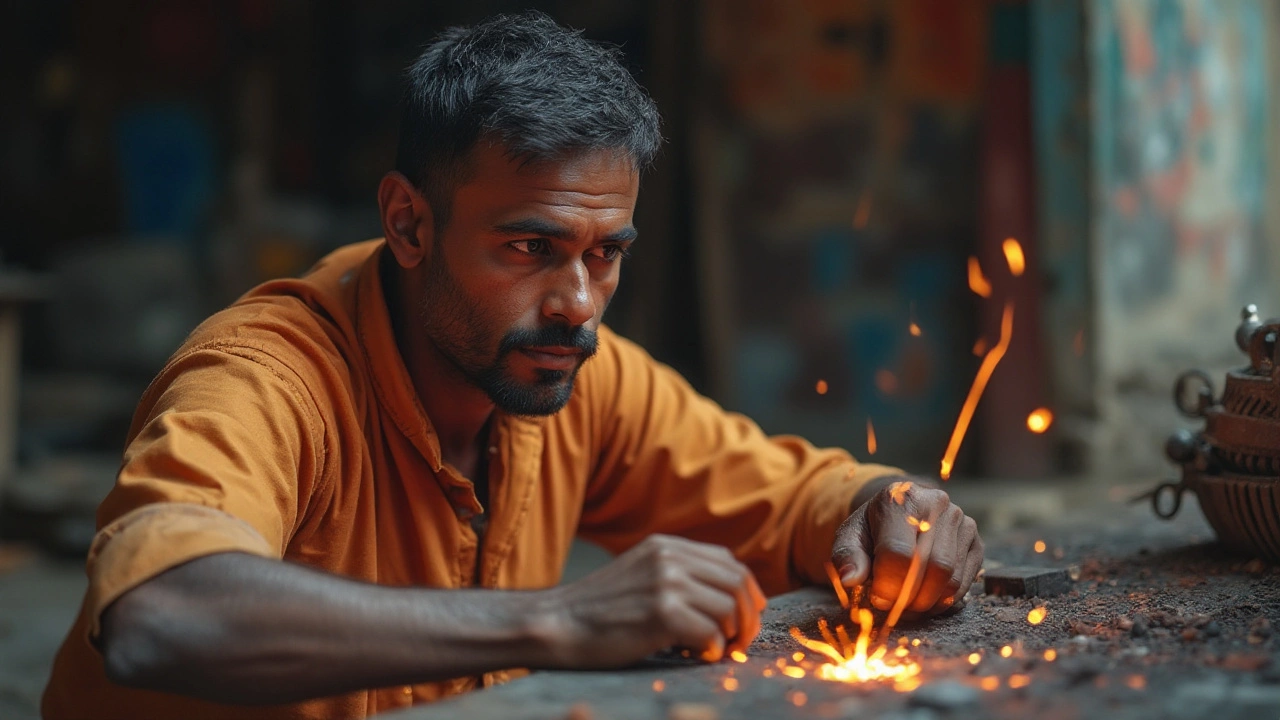
Sustainable Practices in Steel Manufacturing
As we hurtle into an age where both development and environmental consciousness hold vital importance, the steel industry stands at a critical juncture. While steel consumption is integral to growth, the manufacturing processes must embrace sustainability to mitigate environmental impacts. The steel production process is intensive in energy use, contributing notably to global carbon emissions. Leaders in the industry are increasingly turning their focus towards incorporating sustainable techniques that serve to reduce these emissions without compromising on productivity. Technologies such as electric arc furnaces (EAF) are gaining prominence for their ability to utilize recycled scrap steel, producing fewer emissions compared to traditional blast furnaces.
Innovative solutions are essential to transforming the steel industry into a benchmark for sustainability. The shift to renewable energy sources like wind and solar in powering steel plants marks a fundamental change in reducing carbon footprints. Companies are developing partnerships with various renewable energy firms to seamlessly integrate these sources into their operations. The emphasis extends to water conservation practices, as water is indispensable in cooling processes. Closed-loop systems are being implemented, enabling re-circulation and minimizing wastage. A report by the World Steel Association highlights that "Improving the sustainability of steel manufacturing not only aids in reducing environmental impact but also enhances operational efficiency". This shift shows that environmental responsibility and economic gain can go hand in hand.
Recycling plays a crucial role as a sustainable practice within the steel industry. Steel is one of the most recycled materials globally, and utilizing scrap reduces the need for raw material extraction. The United States alone boasts a recycling rate of over 70%, showcasing the potential of circular economies in impacting global steel industry practices. By optimizing the use of resources already in circulation, energy consumption diminishes significantly; it takes roughly 60-75% less energy to produce steel from scrap than from iron ore.
| Efficiency | Iron Ore Steel | Scrap Steel |
|---|---|---|
| Energy Reduction | 0% | 60-75% |
The evolution towards greener steel hasn't been without its challenges, often requiring substantial investments in cutting-edge technology and processes. Yet, falling costs of renewable technologies, along with the industry's resolve, have made this transition more attainable. Carbon capture and storage (CCS) technology is being explored to manage emissions at a larger scale, presenting a promising avenue for the industry to explore. Additionally, cross-industry collaboration spearheaded through organizations like ResponsibleSteel is fostering a collective movement for sustainability. Engaging with governments, businesses, and communities helps in setting standards and benchmarks for sustainable practices, inspiring a domino effect of change across manufacturing landscapes.
In summary, the momentum for adopting sustainable practices in steel manufacturing is growing and reflects an industry increasingly aware of its environmental responsibilities. Going forward, innovation, collaboration, and a persistent focus on reducing the carbon footprint will define the trajectory of steel production. Success in these areas promises a dual benefit of sustaining industrial growth while safeguarding the planet—a necessity as we tackle the escalating challenges of climate change.
Future Trends in Steel Usage
The landscape of steel consumption is poised for transformative shifts as we progress into the future. With the rapid development of technology and sustainable practices taking center stage, the pathways through which steel is utilized are set for exciting modifications. One of the most significant trends will be the integration of advanced materials science to produce lighter, stronger, and more versatile forms of steel. This trend will no doubt feed into various sectors including automotive, construction, and even consumer electronics, yielding products that are more efficient and environmentally friendly. As countries commit to reducing carbon footprints, their industries too must innovate to align with global environmental standards.
"The future of steel is bound to the hip with our global sustainability goals," says Dr. Megan Li, an environmental strategist with the World Steel Association. "Developing lifecycle-focused products that can be recycled and reused effectively is not just desirable, it's becoming mandatory."
Moreover, geopolitical shifts will also influence steel industry dynamics, as geopolitical tensions and trade policies continue to impact global supply chains. This will likely lead to increased domestic production in countries aiming to secure local resources. Consequently, nations may diversify their sources and invest heavily in technological innovations to enhance efficiency and lower costs, thereby reshaping the supply-demand dynamics of steel globally. The shifts are not merely confined to production but encompass real-time logistics and consumption strategies as well.
In terms of automation, Industry 4.0 is fast embedding itself into steel manufacturing processes. Automation and digitalization are reducing human error, enhancing precision in operations, and allowing for real-time adjustments in production lines. This development is being heralded as a silent revolution in steel production, where smart logistics, networked supply chains, and data-driven decision-making become commonplace. The benefits from automation are likely to ripple through employment structures, necessitating a workforce that's skilled in managing automated systems and digital processes, presenting both a challenge and an opportunity for growth.
| Year | Global Steel Demand (Million Tons) |
|---|---|
| 2023 | 1,900 |
| 2024 | 2,040 |
| 2025 (Projected) | 2,190 |
Emphasizing sustainability, there's a turning point as industries adopt circular economy principles. A surge in 'green steel'—produced with minimal fossil fuel reliance—promises to be a game-changer, with companies investing in electric arc furnaces that leverage scrap metal rather than relying heavily on raw iron ore. Innovations in electric arc technology may soon overtake blast furnace methods, which have been industry stalwarts for decades. The drive towards decarbonization demands conscious changes across the processing and distribution networks. Consequently, technological leaps in recycling will be needed to fully close the loop, reducing waste and optimizing resource efficiency.
